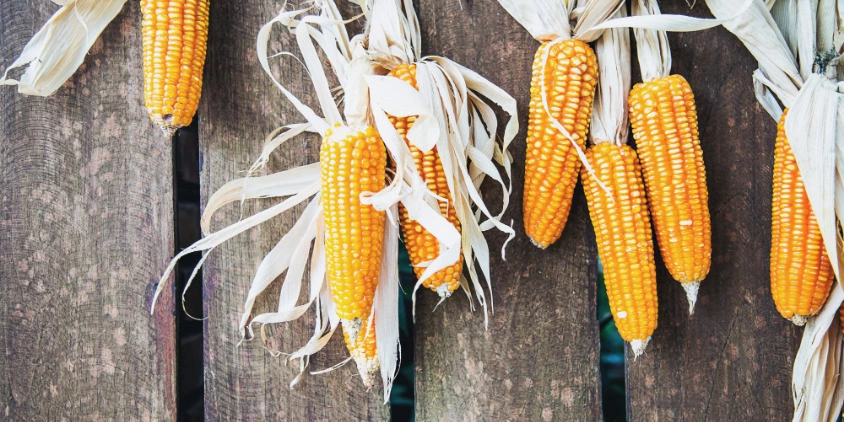
Growing corn generously pays off if you give the crop enough space, warmth, and water. Yet, because the crop is so sensitive to climate and field conditions, there is no one-size-fits-all answer for how to grow corn. Growing it is still a no-brainer, though, when put in context. With today’s readily available technologies, crop producers can quickly adjust the process of growing corn for maximum yields by keeping an eye on various factors in the field, such as the current and predicted weather, soil moisture data, potential threats including weeds and pests, and much more.
What Climate And Growing Conditions Does Corn Require?
Temperatures between 68 and 73°F (20–22°C) are the sweet spot for crop development throughout the whole growing season
. If the soil is sufficiently moist, however, corn can grow in heat as high as 100°F (38°C). By sufficient moisture, we mean a consistent supply of mild, periodic precipitation or irrigation across the entire field, totaling not less than 15” (38 cm) during the growing season. The ideal amount of rainfall for a high-yield growing season is between 18 and 20” (45 and 50 cm).
Since corn requires specific climatic conditions to flourish, it is crucial to pick the right fields for growing the crop. This is vital in order to lessen the burden of additional crop care expenses during the corn growing season. It’s simple to pick the ideal corn-growing areas with the help of EOSDA Crop Monitoring. When making this choice, you can’t beat having access to the platform’s historical weather records that include temperature and precipitation readings for any field.


What Type Of Soil Does Corn Grow Best In?
Corn plants are particular about the soil they grow in; therefore, understanding the type of soil and its overall condition is crucial for a healthy harvest. If you want to maximize your yield, grow your early varieties in sand or loam and your late ones in silty or clayey types of soil . Corn, like many other vegetables, prefers acidic and neutral soils with a pH between 5.5 and 6.5. Thus, it is advised to conduct soil testing to ascertain that the soil’s pH is right for growing crops.
The soil’s moisture and efficient drainage are also important factors because of the growing plant’s thirsty nature. Also, corn is a heavy feeder, particularly when it comes to nitrogen, so rich soil is essential for the growth of corn. It grows well in places where soil-improving crops like beans, alfalfa, vetch, or clover were cultivated the previous season. Adding organic matter to the soil, such as compost, manure, sawdust, and grass clippings, can also improve its quality and drainage for successful corn growing, especially in areas with thick clay soil.
Corn seeds have an easier time germinating in light soils because they warm up more rapidly than heavy ones. Make sure the soil temperature is between 60 and 65°F (16–18°C) before you sow the seeds. They won’t germinate well if it’s not warm enough. Soil solarization, which involves covering the soil with black plastic, can speed up the warming process in cold regions and help you start growing crops just in time.
When Is The Best Time To Plant And Grow Corn?
Because of their susceptibility to frost damage, crops that are planted too early often fail. For your own protection, wait at least two to three weeks following the final spring frost date before planting corn. Figuring out when it is safe to plant is a breeze with the help of EOSDA Crop Monitoring’s historical data on temperature anomalies in the field and the weather forecast for the next 14 days. If you have a reliable weather forecast, you can always get the corn planting season started on time and get the most out of your crops.
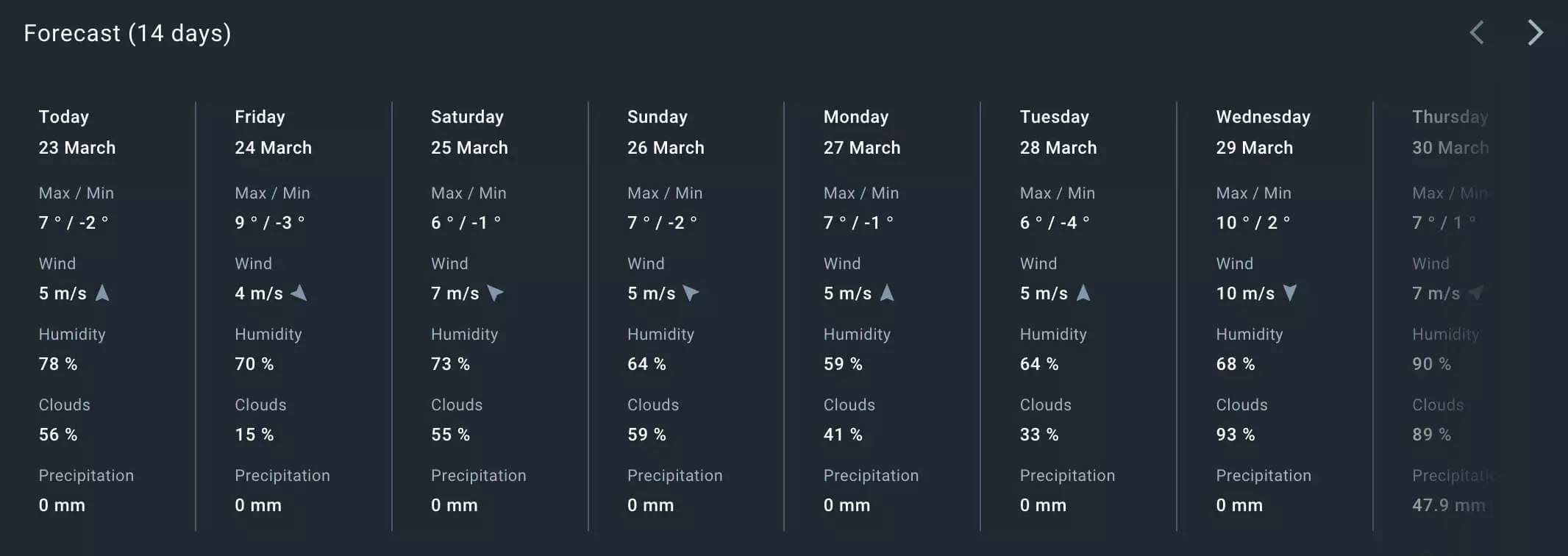
In many regions of the United States, late March or early April is the best time to plant corn. Yet, consider the weather’s moisture levels while picking when to plant corn. March and early April are often wetter than other months, making them too damp for successful corn plant growing. Most of the time, planting between April 20 and May 10 gives the highest germination rates and crop yields.
Corn needs 60–100 days without frost throughout its growing season, so it is still important to plant it early. Planting at a later time requires putting the seeds at a depth of two inches (5 cm) to prevent them from drying out.
How To Plant Corn
Growers who want their crop to be as fruitful as possible should take the following steps to prepare the soil before planting corn:
- strip the ground bare of vegetation;
- plow the field deeply;
- amend the soil with limestone;
- mix in some cured manure to boost soil fertility and structural integrity;
- rotavate the field;
- set up the drains.
Planting corn seeds in the ground can be done either by hand or with the aid of a mechanical planter. Farm workers shouldn’t use fast planting speeds that cause the planter to bounce. This way, the depth and emergence of the seeds will be even throughout the field.
Optimal plant density depends on a wide range of variables, including soil type, irrigation, hybrids used, and field management practices. If you consistently space your plants and allow for even emergence, you’ll get the best possible harvest.
The best way to plant corn implies putting two seeds in each hole and covering them with a thin soil layer. How deep to plant corn seeds? The depth of the hole should be between 0.8 and 1.2” (2 and 3 cm). If seeds are planted too shallow, they may have a decreased chance of growing strong nodal roots. In dry soils, planting at a depth of up to 2.5” (6 cm) will help ensure an even crop yield by allowing roots to grow deeper down and access the moisture below
. Spread phosphorus-rich fertilizer at planting or no later than two weeks following planting to provide crops the nutrition they need to grow.
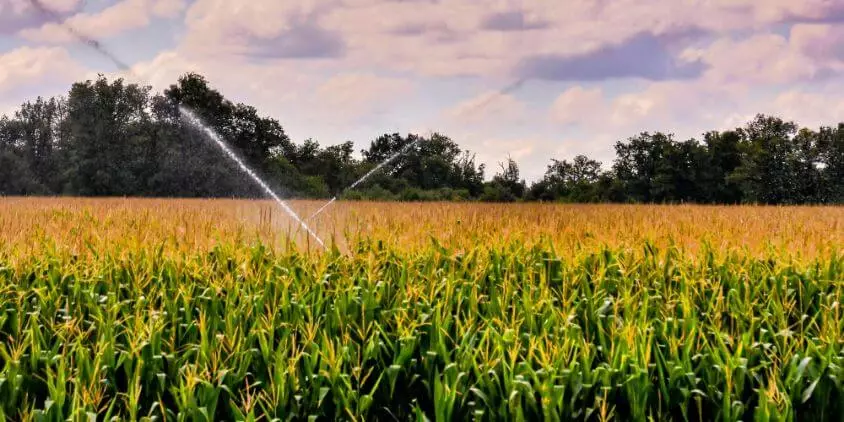
How To Care For Corn Plants
Since there are so many aspects that must be continuously examined and managed for corn to grow healthily, there isn’t any definitive guide for how to care for it. Yet while maintaining growing crops, there are a few key areas that require your extra attention. First and foremost, during the corn growing season, you need to ensure sufficient irrigation and nutrient supply. A maximum of plants should be pollinated, so make sure of that as well. Last but not least, you need to protect your growing crops against weeds, pests, and diseases.
Irrigation
Providing enough water from the time of planting until harvesting is essential. Yield potential can be drastically lowered if the corn plant’s water requirements are not met during the reproductive growth phase.
Don’t overwater either, as this could result in rotten seeds or plant roots. Knowing how plant water needs change throughout the growing season will help you make better-informed decisions about when and how much water to use for irrigation.
EOSDA Crop Monitoring makes it simple to track how much water your crops require. The NDMI index shows the current moisture content of corn; any unusual readings indicate potential issues with soil moisture or a failure of plant water absorption. But the NDMI index map aids in spotting these outliers early on, giving you enough time to figure out what’s wrong and how to fix it.
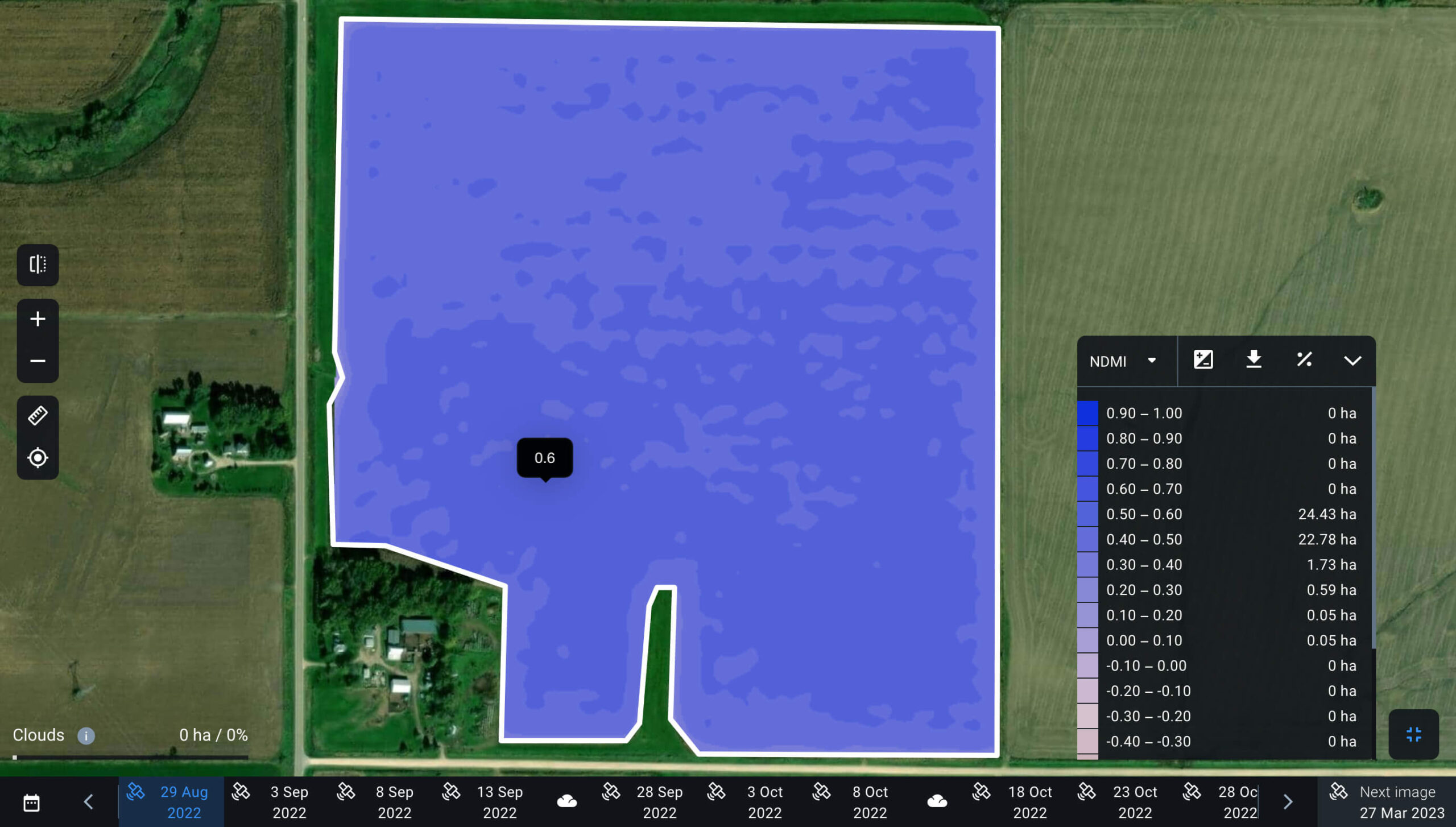

Weed Control
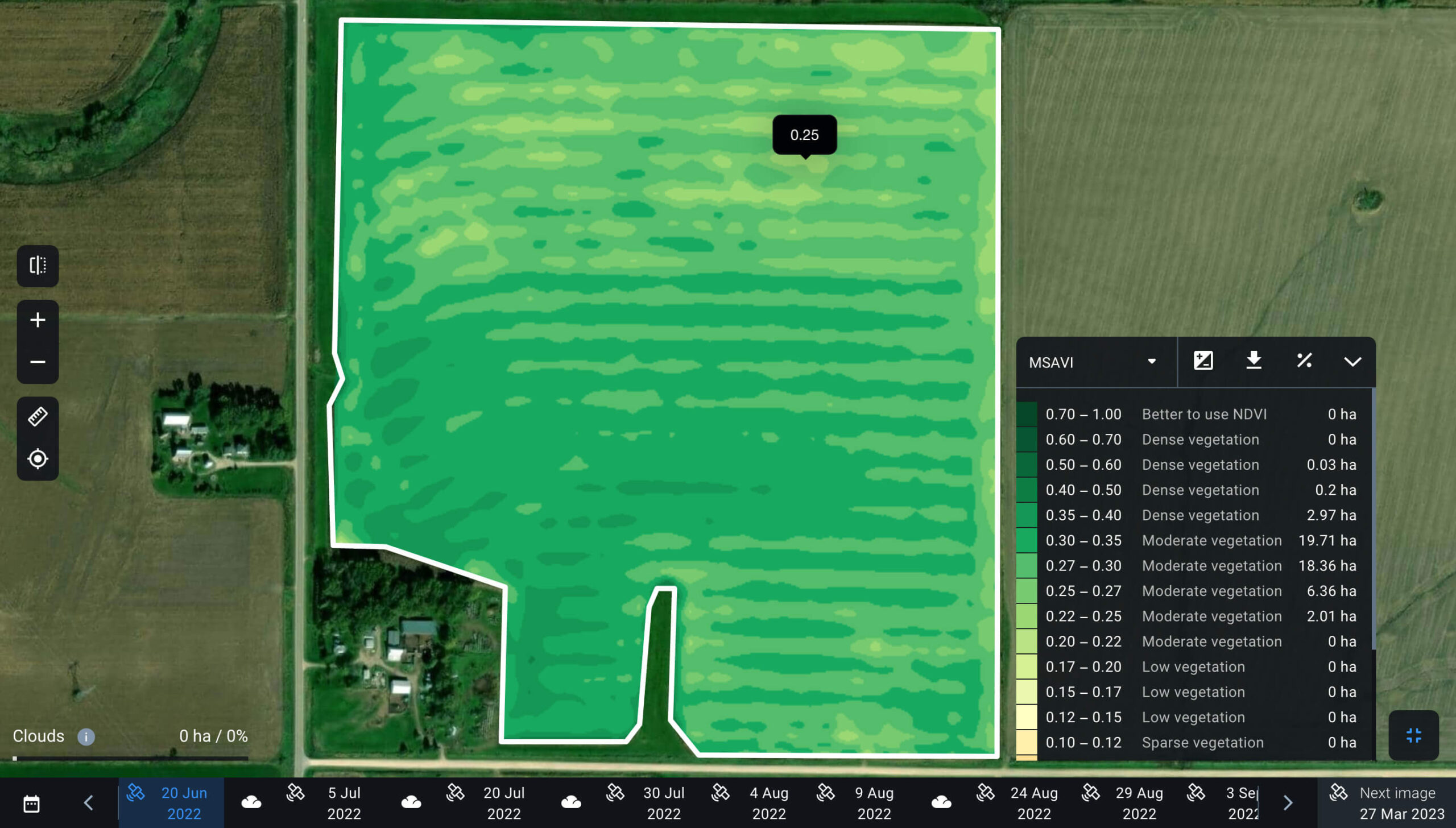
Fertilizing
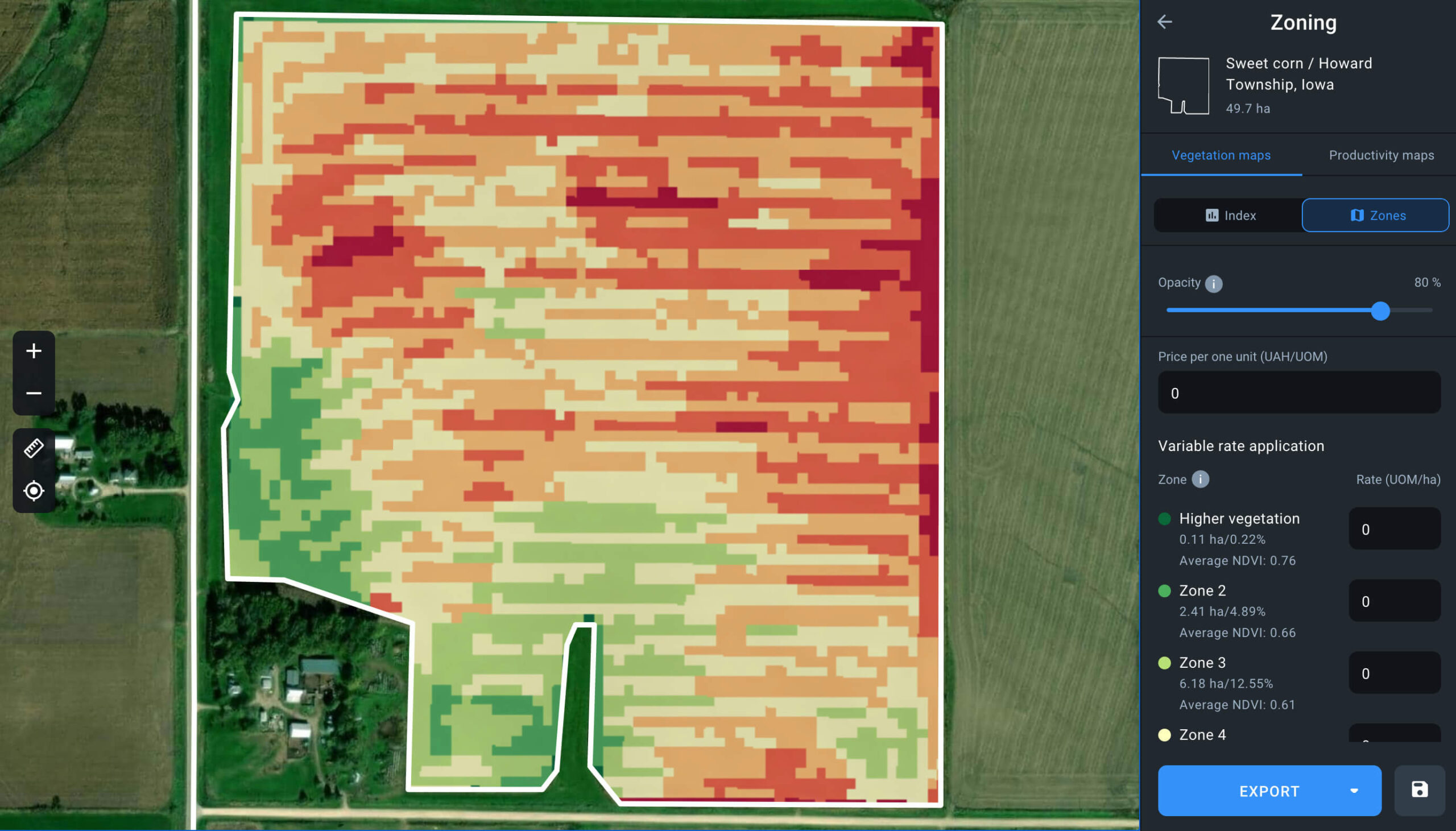
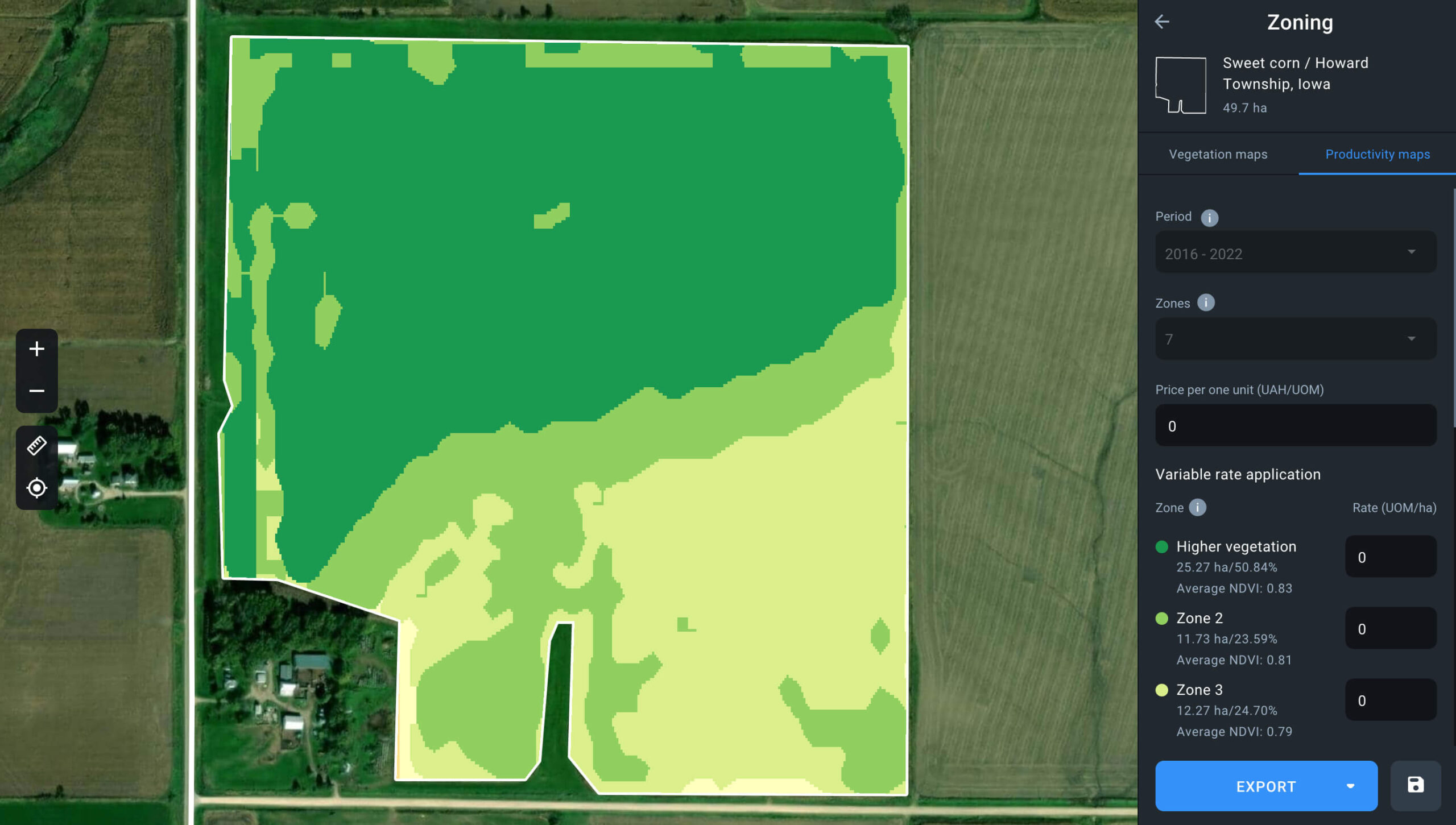
Pollinating
If you are growing corn in blocks of at least three rows in close proximity to one another instead of separate rows, the wind will pollinate the plants for you. As the wind blows and the stalks brush against one another, the pollen is dispersed. Pollen is transferred from the corn tassels to the silks of the developing ears when the tassels first appear.
Poorly pollinated plants will have ears with empty spots where the kernels should be. In such a situation, manual pollination comes in handy. Even in large fields, it has been shown that hand-pollinating increases crop yield by reducing the number of sterile stalks and improving kernel formation overall.
Plan to grow only one corn variety to prevent cross-pollination between other cultivars, which can alter the flavor. Otherwise, separate your crop varieties by at least 300 feet (92 m).
Pest And Disease Control
Corn diseases tend to be weather-dependent. For instance, Northern Corn Leaf Blight (NCLB) proliferates in the growing corn if the weather is too chilly and moist. Root rot and common smut may spread in hot, dry growing conditions. Economic losses from these crop diseases can be mitigated through preventative methods, including appropriate irrigation, growing resistant hybrids, and the composting of plant residue. Fungicides and other methods of disease control throughout the growing season are also beneficial.
In addition to the widespread diseases, there are various corn-specific pests to deal with. The corn earworm (Heliothis virescens) and the corn leaf worm (Spodoptera frugiperda) are the two most common ones. Systematic spraying of growing crops with the right amount of pesticide is the best way to control them. Crop rotation and cover crops also prove to be useful long-term strategies in the fight against pests and diseases.
Though pest and disease prevention is key, so is continual field monitoring. EOSDA Monitoring features a number of vegetation indices that let you track corn growth and development around the clock. When combined with the Scouting feature, this information is a deadly weapon that can be used against any pest. Regardless of whether worms, viruses, or fungi are to blame, it enables you to quickly identify and pinpoint the problem’s source. You can get a clear picture of what is going on with your growing crop through detailed scouting reports sent with our specialized mobile app straight from the field. So, you will be able to address the discovered issues right away and make well-informed decisions.
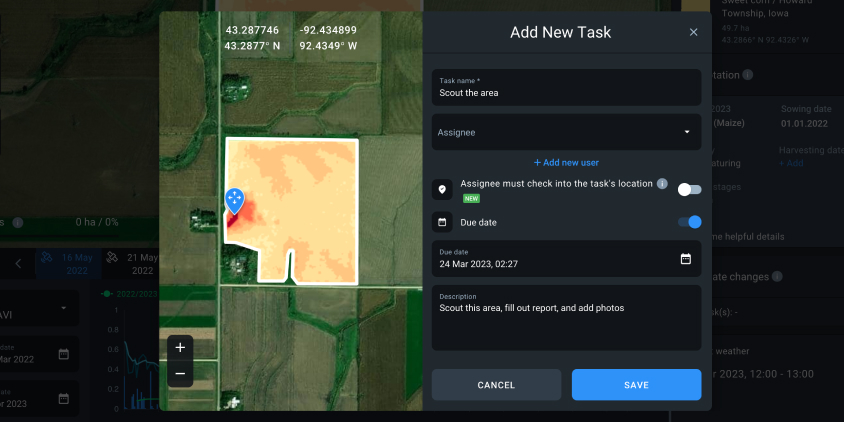
All of these maintenance practices promoting the corn growth process will ensure a robust crop and a reasonable financial return even in less-than-ideal weather conditions without requiring the farmer to put in excessive labor or time.
How Long Does It Take For Corn To Grow?
It usually takes between two and three months from planting seeds to harvesting mature crops. Corn growth time varies widely among different cultivars. Some types of corn (for example, Seneca Horizon or Earlivee) need just 58–65 days to grow, whereas others (such as Silver Queen, Platinum Lady, and Camelot) require 86–92 days to reach maturity. The average corn growing time for each variety is typically specified on the back of the seed packet. It is crucial to choose a variety that can thrive in your region’s average growing season.

How To Harvest Corn
Corn harvesting is often done in October and November. Crops should be harvested when the grain is relatively dry, with a moisture percentage of 23%–25%. At this level of water content, kernels are fairly simple to remove from the cob.
After the corn growing season is complete, don’t be reluctant to harvest. By harvesting early, you can prevent field losses due to corn ear drops or fungi and save your crops from being damaged by frost and storms, while delays in harvesting exacerbate issues caused by fungal infections inside the kernels. These holdups enable pathogenic fungi to develop more mycotoxins, making the grain unsafe for people and animals to eat. In lodged crops, rotting of the stalks grows quickly, so it’s important to harvest those fields first.
Harvesting crops from vast acres takes a grain combine. The combine uses special mechanisms to remove the hulls and separate the kernels from the cobs. During harvesting, only the kernels are saved; the husks and cobs are discarded. Corn cobs and stalks remaining on the field help minimize erosion and restore plant matter, both of which are beneficial to the soil for future corn growing.
If you invest consistent effort during the corn growing season, you’ll be rewarded with bumper crops. Increases in crop productivity are inevitable when high-yielding growing conditions like warmth, nutrients, watering, and smart farming practices are put into place.




